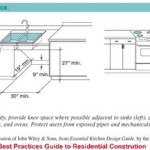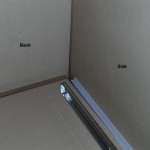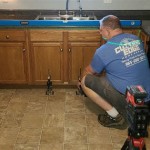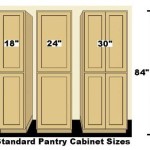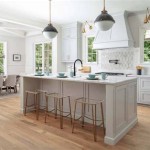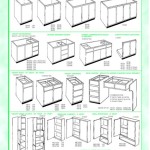Kitchen Wood Hood Ideas: Blending Functionality and Style
Kitchen wood hoods serve as a focal point in kitchen design, combining necessary ventilation with aesthetic appeal. They are not merely functional appliances; they contribute significantly to the overall character and style of the culinary space. Selecting the right wood hood requires careful consideration of various factors, including kitchen layout, cabinetry design, desired style, and functionality expectations. This article explores various wood hood ideas, offering insights into design elements, material choices, and practical considerations to enhance the kitchen environment.
Material and Finish Considerations
The choice of wood species and finish significantly impacts the appearance and durability of a kitchen hood. Different wood types offer varying grain patterns, colors, and inherent properties that can complement diverse kitchen styles. Hardwoods like maple, oak, cherry, and walnut are popular choices due to their durability and aesthetic appeal. Softwoods, such as pine, can also be used, often in rustic or farmhouse-style kitchens, although they may require more careful finishing to ensure longevity. The selection should be in harmony with existing cabinetry and overall design scheme.
Maple, known for its light color and smooth grain, provides a versatile base for various finishes. It can be stained or painted to match existing cabinetry or create a contrasting focal point. Oak, with its distinctive grain pattern, adds character and warmth to a kitchen. Cherry wood, with its rich reddish-brown hue, offers a touch of elegance and sophistication. Walnut, a darker and denser hardwood, provides a luxurious and modern aesthetic.
The finish applied to the wood hood further enhances its appearance and protects it from moisture and grease. Common finishing options include staining, painting, and clear coating. Staining allows the natural beauty of the wood grain to show through, while painting provides a uniform color that can complement various design schemes. Clear coatings, such as varnish or lacquer, protect the wood from moisture and scratches while allowing the natural color and grain to remain visible. The choice of finish also depends on the kitchen's usage; high-moisture environments may require more durable and water-resistant finishes.
Beyond solid wood, engineered wood options, such as plywood or medium-density fiberboard (MDF), are also used in wood hood construction. These materials can provide cost-effective alternatives to solid wood, offering stability and resistance to warping. MDF, in particular, is often used for painted hoods, as it provides a smooth, paintable surface without prominent grain patterns. However, it's crucial to select engineered wood products that are appropriately sealed and finished to prevent moisture damage.
Design Styles and Architectural Integration
Wood hoods can be designed in a variety of styles to complement different kitchen aesthetics. From traditional to contemporary, the design options are extensive, offering flexibility to integrate the hood seamlessly into the kitchen's architectural framework. The style should align with the existing cabinetry, countertops, and overall design theme to create a cohesive and visually appealing space.
Traditional kitchen designs often feature ornate wood hoods with decorative moldings, corbels, and raised panel details. These hoods may be designed as focal points, incorporating antique-inspired hardware and intricate carvings. Distressed finishes and aged patinas can further enhance the traditional aesthetic, adding a touch of vintage charm. Integrating a wood hood into a traditional kitchen can amplify the sense of warmth and elegance, reflecting the charm of yesteryear.
Contemporary kitchens often feature sleek, minimalist wood hoods with clean lines and understated details. These hoods may be designed as flush-mounted or integrated into the cabinetry for a seamless appearance. Light-colored woods, such as maple or birch, are often used in contemporary designs, providing a bright and airy feel. Minimalist hardware and subtle detailing further enhance the contemporary aesthetic, creating a streamlined and sophisticated look.
Farmhouse-style kitchens often feature rustic wood hoods with exposed wood beams, shiplap siding, and distressed finishes. These hoods may be designed with a simple, functional form, emphasizing natural materials and handcrafted details. Reclaimed wood or repurposed lumber can be incorporated to add character and history to the design. The farmhouse aesthetic aims to create a warm and inviting space, reflecting the charm and simplicity of rural living.
Beyond these common styles, transitional designs blend elements from traditional and contemporary aesthetics, creating a balanced and harmonious look. These hoods may feature clean lines with subtle decorative details, combining the best of both worlds. The flexibility of transitional designs allows for customization and personalization, ensuring that the hood complements the unique character of the kitchen. The integration of wood elements in a transitional kitchen contributes to a sense of warmth and sophistication.
The architectural integration of the wood hood involves considering its size, shape, and placement within the kitchen. The hood should be appropriately sized for the cooktop or range beneath it, ensuring effective ventilation and smoke removal. The shape of the hood can vary from traditional pyramid-shaped designs to more modern curved or angular forms. The placement of the hood should take into account the existing cabinetry and architectural features, ensuring that it complements the overall design scheme.
Functional Considerations and Ventilation Performance
While the aesthetic appeal of a wood hood is important, its primary function is to provide effective ventilation. The hood must efficiently remove smoke, odors, grease, and heat from the kitchen, ensuring a comfortable and healthy cooking environment. The selection of a wood hood should take into account the size and type of cooktop or range, as well as the kitchen's layout and ventilation requirements.
The ventilation performance of a wood hood is measured in cubic feet per minute (CFM), which indicates the volume of air the hood can exhaust per minute. A higher CFM rating indicates a more powerful ventilation system. The appropriate CFM rating depends on the size and type of cooktop or range. As a general guideline, gas cooktops require a higher CFM rating than electric cooktops, due to the greater heat and smoke they produce. The distance between the cooktop and the hood also affects the required CFM rating; a closer distance requires a lower CFM, while a greater distance requires a higher CFM.
Internal or external blower options are available for kitchen hoods. An internal blower is housed within the hood itself, while an external blower is located outside the kitchen, typically on an exterior wall or roof. External blowers are generally quieter than internal blowers, as the noise is generated outside the kitchen. However, they may require more complex installation, including running ductwork through walls or ceilings. The choice between an internal and external blower depends on the homeowner's priorities regarding noise level and installation complexity.
The ductwork connected to the wood hood is crucial for effective ventilation. The ductwork should be properly sized and installed to ensure optimal airflow. Undersized or improperly installed ductwork can reduce the hood's ventilation performance and increase noise levels. Smooth, rigid ductwork is generally preferred over flexible ductwork, as it provides better airflow and reduces the risk of grease buildup. The ductwork should be routed directly to the exterior of the building, avoiding unnecessary bends or obstructions.
Beyond ventilation performance, consider the hood's features, such as lighting and controls. Built-in lighting illuminates the cooktop or range, providing better visibility during cooking. The lighting should be bright and energy-efficient, such as LED lights. The hood's controls should be easy to use and allow for adjusting the fan speed and lighting. Some hoods also feature automatic sensors that adjust the fan speed based on the amount of smoke or heat detected.
Maintenance is also a crucial aspect of wood hood ownership. Regularly cleaning the hood's filters removes grease and prevents buildup, ensuring optimal ventilation performance. Removable and dishwasher-safe filters are convenient and easy to maintain. The exterior of the wood hood should also be cleaned regularly to remove dust and grease, using a mild soap and water solution. The finish of the wood hood should be protected from harsh chemicals or abrasive cleaners, which can damage the surface.
Implementing these considerations allows the integration of a kitchen wood hood that combines aesthetic appeal and functional performance, contributing to a well-designed and efficient culinary space.


How I Built My Diy Farmhouse Vent Hood Cover

Cabinetry Wood Hoods Omega

Wood Range Hoods Under Cabinet Mount Wall And Inserts Kitchen Hood Design

Custom Range Hood Styles Trends And Ideas

15 Kitchen Hood Design Ideas That Will Capture Your Gaze With Photos

Custom Range Hoods Kitchen Design Ideas Hollingsworth Home

10 Unique Range Hood Ideas Hausmatter

10 Inspiring Range Hood Ideas Heather Hungeling Design

Pin On Diy Range Hood
Related Posts

